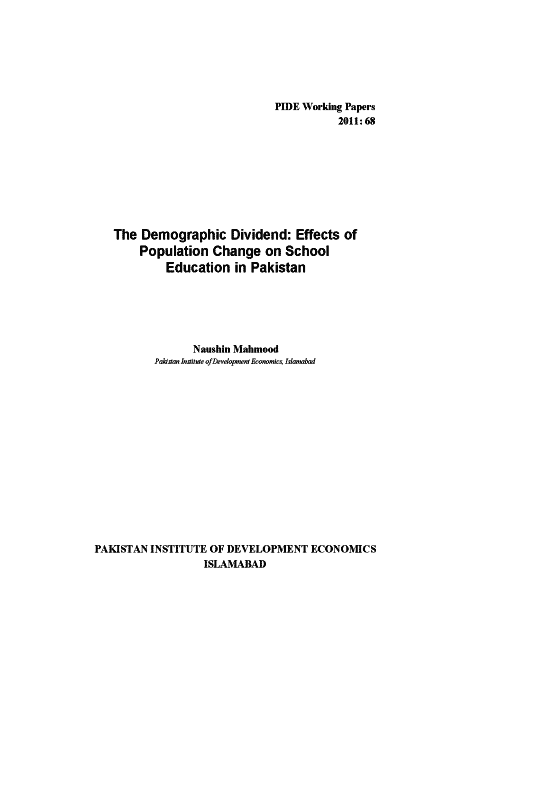
Pakistan Institute of Development Economics
- Home
Our Portals
MenuMenuMenuMenuMenuMenuMenu - ResearchMenuMenuMenuMenuMenuMenuMenu
- Discourse
- The PDR
- Our Researchers
- Academics
- Degree Verification
- Thesis Portal
- Our Portals
The Demographic Dividend: Effects of Population Change on School Education in Pakistan
This study examines how the changing demographics in Pakistan, resulting primarily from fertility transition, would affect educational attainment of school-age population during the next two decades. The basic question addressed is whether the expected population change would enable the country to benefit from the demographic dividend and enhance the chances to achieve universal primary education by 2015, one of the targets of the Millennium Development Goals (MDGs). Using projected population estimates and school enrolment data, the findings show that about 9.5 million children aged 5-9 years were not enrolled in school in 2005-06. Assuming a gradual and steady increase in enrolment, education simulations show that the number of children aged 5-9 years who will never enter school will cumulatively rise to approximately 27.7 million by 2030, of which 12.2 million would be boys, and 15.5 million girls, and it may take another two decades to achieve universal primary enrolment. Furthermore, children aged 10-14 years not attending secondary level were 14.5 million in 2005-06. Given the current trends in enrolment, this number is expected to increase almost four times by 2030, thereby widening the population education gap over the years. Thus rapid increase in enrolment is the desired option. Otherwise the large education deficit would create conditions highly unfavorable to capitals on the demographic dividend, and pose a threat rather than offer an opportunity to stimulate economic development. In terms of policy actions, investments in school education need to be almost doubled to absorb the prospective increase in the school-age population during the next two decades.



